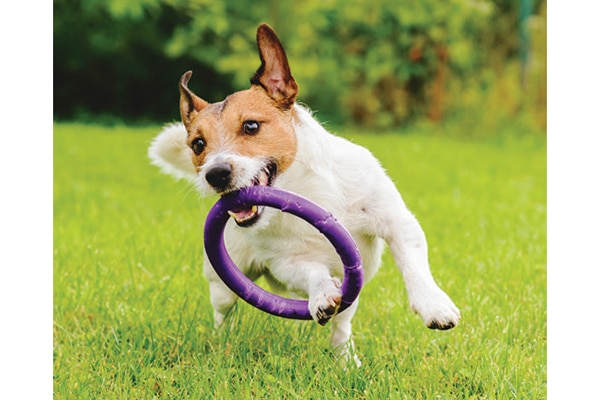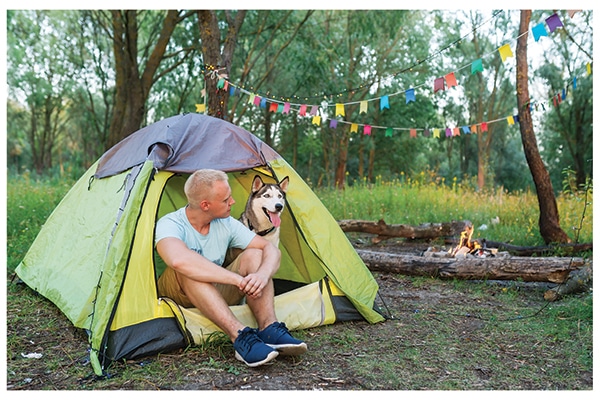When my Australian Cattle Dog mix, Candy, first came to live with me, she was 6 years old. I’d adopted her from a local animal shelter where, three weeks prior, her family had surrendered
her because they were moving.
Six years of age is a tough time for a dog to have to make a huge life change. By the age of 6, most dogs have reached middle age. For some larger dogs, 6 is the beginning of the senior years. Dogs this age are set in their ways and have developed a strong bond with their family. Candy was no exception. After we brought her home, she spent several months in a depressed state, sleeping in a corner of the yard, far away from the goings-on of the household.

It’s not surprising that it took Candy about six months to adjust to her new life. At the age of 6, she was well into her adulthood. Her daily routine and the people she lived with since puppyhood had provided her with the safety and security she needed. Having all that torn away from her halfway through her life was traumatic.
But 6-year-old dogs are not old — they are simply mature. With a little bit of patience and love, Candy adjusted to her new life and became a happy girl. Still young enough to play, hike, go to the beach and attend training classes, she was also a great surrogate mom to our new puppy.
Managing middle age
What can you do to make sure your dog stays happy and healthy during this stage of her life? Plenty! Six is a great age, and you can do a lot with your dog.
Fun outings. Take her on walks, hikes, camping trips — any place you can go that allows dogs. The more exercise and activity you can provide your dog at this age, the longer she will stay healthy and alert.
More training. Six-year-old dogs might be middle-aged, but they’re still capable of learning — a lot. If your dog doesn’t have basic obedience training, take her to a class. It will not only make her a better companion, it will also provide her with mental stimulation. If your dog is already a champ when it comes to the basics, think about taking up a fun dog sport, like agility or rally. At 6 years old, your dog has a better attention span than she did as a puppy and will catch on quickly.
Playtime. Does your dog still like to play? By the age of 6, many dogs still love to chase balls, gnaw on bully sticks and chomp on squeaky toys. Many still also enjoy playing with other dogs. Take your dog on a shopping trip to a local pet supply store and let her pick out some new toys. If she enjoys romping with other dogs, make playdates with your friends’ dogs, or enroll her in doggie day care. Here she can spend an entire day playing with carefully screened dogs, all while under supervision. Even just one day a week at doggie day care can bring lots of fun and stimulation into your dog’s life.
Comfy bed. Now that your dog has hit middle age, add some items to help her stay happy and comfortable. An orthopedic bed is a good start. Designed to make it easier on your dog’s joints, orthopedic beds provide more cushion than a standard bed. While your dog may not yet be arthritic, an orthopedic bed can help keep her comfortable as her joints age.
Nutritional supplements. Your middle-aged dog might benefit from some dietary supplements at this point in her life. Omega-3 oils for dogs can help her coat stay healthy, while a joint supplement containing glucosamine, chondroitin and MSM can help her joints stay healthy longer.
Regular exams. If you haven’t been doing it already, start taking your 6-year-old dog for annual health checks. Yearly blood work and a veterinary exam can help you get a jump on any possible health issues that may be developing. As dogs age, they are more prone to kidney disease, joint problems and other maladies.
Being a pet parent to a 6-year-old dog can be a real joy. Well past the puppy years but still young enough to play and learn, middle-aged dogs make excellent companions.
About the author: An award-winning writer and editor, Audrey Pavia is a former managing editor at Dog Fancy magazine and former senior editor of The AKC Gazette. She is the author of The Labrador Retriever Handbook (Barrons) and has written extensively on horses as well as other pets. She shares her home in Norco, California, with two rescue dogs, Candy and Mookie.





